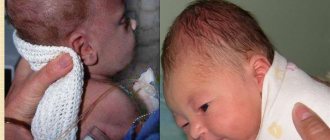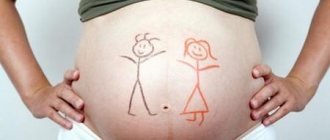In the last couple of decades, such a trend has been noticed: many children are born with above-average indicators (height and weight). 4 kilograms - this figure no longer scares anyone. However, a large fruit is not so bad. It is much worse when a child is born with a critical body weight. Although there are also a lot of nuances here, the viability of the fetus depends not only on weight, but also on the duration of pregnancy.
According to WHO, very low body weight is considered to be less than 2 kilograms (2.1 kg for boys). Although there are cases when children were born weighing less than 500 grams and they managed to survive. Of course, these are exceptions to the rule.
This article will focus on the smallest children in the world who managed to survive. All of them were born premature, but thanks to the efforts of the medical staff, these guys are now enjoying life.
Willow Ludden-Brooks, 450 g
Willow Ludden-Brookes is a native of Great Britain. The girl was born in 2009, the gestation period was 23 weeks. The mother was diagnosed with an intrauterine infection. It was she who caused the premature birth. Doctors were 90% sure that the child could not be saved. Surprisingly, Willow was able to take a breath, she even had enough strength to cry.
At first, the press closely followed the girl’s life. She was quite healthy, of course, she needed to spend a lot of time in the hospital. Nothing is known about her right now, but we hope Willow is doing well.
How much should a baby weigh
In order for a child to fully develop from the first days, many factors should be taken into account, and the most important of them is weight. If the weight has changed even by 100 g in one direction or the other, this is an indicator that there is a health problem.
The baby's weight gain before birth depends on the mother's diet and lifestyle. If a newborn weighs more or less than normal (3.2 - 3.5 kg), this may mean a problem in his health. Excess weight signals possible diabetes. And if you are underweight, there is a possibility that the baby has weak immunity or developmental defects. Hereditary predisposition plays a major role in determining the weight factor. If the parents and other children in the family are large, then the birth of a baby with a weight above normal is natural and should not cause alarm.
Nathan Siberras, 435 g
Another case that occurred in the UK, in Southampton. Nathan Siberras was born at 24 weeks. This happened in 2008. Doctors gave him one chance in a million, but the boy managed to take advantage of it. By the way, his name translates as “Gift of God.”
Despite the short time, he was able to breathe on his own. Nathan was placed in an incubator and spent a lot of time there. Siberras's parents went through many difficult moments; doctors did not give any guarantees; the boy's life could have ended at any moment.
Apparently he was born under a lucky star. Within a few weeks he was discharged. Nathan had a very good appetite, he began to grow by leaps and bounds. Soon the boy was almost as tall as his older brother; by the way, the difference between them was 4 years.
Alexis Clark, 312 g
This event took place in San Diego in 2013. A little girl was born, weighing just over 300 g. Little is known about her. Apparently, her parents are not those who like to communicate with representatives of the media. The period was only 25 weeks, the chances of survival were, but insignificant.
The girl spent six months in the hospital, after which she was released to her family. Mom Laurie Clark calls her an angel and thanks fate for the fact that Alexis survived, although her life hung in the balance more than once.
Baby's body structure
At first, the baby retains the position it had in the womb. The baby’s body looks plump due to the evenly distributed subcutaneous fat layer and poorly developed muscles. The arms and legs are equal in length and much shorter than the body. The spine does not yet have physiological bends, it does not bend, and the ribs are attached to it at a right angle, the chest is shaped like a barrel. The fontanel is open between the bones of the forehead and crown.
The newborn breathes unevenly: not too often and shallowly. A normal heart rate of 120 to 140 beats increases when the baby cries.
The horizontally located stomach is still small, and the intestines are characterized by underdevelopment of nerve endings, a delicate mucous membrane, a large number of blood capillaries, and a lack of intestinal glands. The intestinal walls are highly permeable. There is not enough saliva in the mouth, and the oral mucosa is poorly protected. But it already has all the enzymes necessary for digestion. From the first hours, the baby’s gastrointestinal tract and respiratory system are populated with necessary microorganisms.
Normal stool of a newborn baby is established by the 5th or 6th day of life. During the first 2 days, the baby urinates several times, then increases the daily number of urinations up to 20 times.
Water balance is of great importance for maintaining the functions of the baby’s body. Most of its body consists of water, but the balance is fragile and easily disturbed. A child needs about 180 g of water per 1 kg of weight per day, which he receives from mother's milk.
Different parts of the baby's nervous system are developed differently, but basically all are ready to function. The visual and auditory analyzers are much better formed than the motor ones. Already in the first days of life, a baby can fix his gaze on a bright spot, on his mother’s face. He listens to sounds and even makes some faint sounds.
The baby moves uncoordinated and stretches. The arms and legs move erratically and cannot be fully straightened. He clenches his fingers into fists.
Amalia Sonya Taylor, 284 g
For some time, Amalia Sonya Taylor from the USA was considered a record holder among other premature babies. Not surprisingly, birth weight is 284 gamma (21 weeks). The girl was born in 2006.
Her mother was diagnosed with infertility, but the woman did not give up, she hoped that fate would give her a child. There were many attempts, and the lucky woman still managed to get pregnant. It was a real miracle. But she couldn’t bear the child. Amalia spent six months in an incubator and had many health problems. She was discharged weighing 1.8 kg.
Subsequently, she was somewhat behind in development from her peers. Physical and mental indicators did not meet the norm, but Sonya Taylor’s parents did not despair. Now the girl is 13 years old. There is no information about her online; the family carefully avoids communicating with journalists.
Physiology of the newborn
The development of a baby in the first weeks and months depends on whether it is full-term or not full-term. The main parameters - height and weight - depend on the age of the mother and father, their state of health and living conditions. A full-term baby develops in the womb for 40 weeks. Such babies normally weigh from 3.2 to 3.5 kg, although the range can be quite large - from 2.5 to 4.5 kg. Height also ranges from 47 to 54 cm.
Immediately after birth, a restructuring of organs and their functions occurs in the child’s body due to changes in the environment - from intrauterine life to life in the outside world. He may lose 5 to 8% of his weight in the first few days. This is normal, since after a week the weight will be restored, and during the first month the baby’s weight will increase by about 0.7 kg.
During the first weeks, the temperature is unstable and depends on the situation. Therefore, it is necessary to strictly monitor and maintain comfortable conditions for the baby so that he is not hot or cold. On the first day there may be slight shaking and tremors of the arms and legs, which quickly pass. Babies respond well to sources of bright light and loud sound. They already have a developed sense of smell and hearing. At times, muscle tone may be reduced and certain reflexes may be suppressed. It depends on what the birth was like. After a few days everything returns to normal.
Madeline Mann, 280 g
Madeline Mann was born in 1989. This is the story that should be told to women who are worried about the life of their child. After all, at that time medicine had not yet reached the level it is now.
Madeline's mother developed preeclampsia, and doctors were forced to perform emergency surgery. Mann was born by Caesarean section. Major health problems. She was forced to spend 4 months in the hospital. When Mann was discharged, she weighed about 2 kilograms.
In the future, all health difficulties became a thing of the past. Madeline was no different from her peers. She received an education and became a psychologist. Growing up, Mann retained her petite figure; at 20, she weighed 32 kg (with a height of 1.30 m).
Is it necessary to swaddle a newborn baby?
Swaddling a baby currently causes a lot of controversy among parents and doctors. There are a large number of arguments for and against. Many believe that this is beneficial for the baby; for others, diapers make care more difficult. Only the parents themselves decide this issue for themselves, positively or negatively.
The custom of wrapping babies in the first months of life appeared a long time ago and is still preserved among many peoples, especially in cold areas. In the old days, this helped families out due to the lack of children's clothing.
Parents' arguments for diapers:
- Swaddling helps babies adapt to the world around them.
- The child feels protected, being wrapped in linen, calms down faster and falls asleep.
Cons:
- Swaddling reduces a child's motor skills, which causes a delay in the development of motor skills: such children later begin to move independently and stand on their feet. However, they quickly catch up with their peers in development.
- If you swaddle your baby tightly, the blood supply may be disrupted.
- Babies themselves disapprove of diapers.
- This procedure requires some skill: not all parents can do it right away.
- Once a baby is used to diapers, it will be difficult to wean them off after a while.
Some people consider using a sling as a replacement for swaddling. In it, the child feels in the “cradle” position, like in diapers, and calms down.
Traditions of caring for newborns have been developed over centuries, so swaddling, which was practiced in ancient times, is surrounded by a huge number of myths. For example, it is believed that a baby who grows up without diapers will have crooked legs and back. This statement is not true; on the contrary, tight swaddling can lead to curvature of the hip joints. It must be remembered that when swaddling, you should not straighten the baby’s legs.
The next myth claims that without diapers, a baby randomly kicks its legs and arms, and can cause some damage to itself. If you cut your nails in a timely manner, or even better, put specially made mittens on your hands, troubles can be avoided.
Kenna Moore, 272 g
Kenna Moore was born in Charlotte (USA). The pregnancy was initially problematic. Doctors suggested that Kenna's mother have an abortion because abnormalities were discovered in the fetus. The woman refused, but at 24 weeks she had to have a caesarean section.
To the surprise of the doctors, the child showed signs of life, but Kenna was unable to breathe on her own. She underwent several operations, each of which could have cost her life, but everything turned out okay. Moore was no larger than the palm of an adult's hand; she could easily fit on it.
She spent six months in an artificial therapy device. When the girl's weight reached 3 kilograms, she was discharged from the hospital.
Newborn hygiene
The baby has very sensitive skin that requires meticulous care. It must remain dry and neat at all times. It is necessary to change diapers after every sleep, feeding, or check if the baby is worried. It is recommended to use high-quality diapers that absorb moisture well, so that the baby’s bottom does not feel damp, but is always dry.
In the first weeks, it is recommended to cleanse the skin with wet wipes, the packaging of which must be marked that they are intended for sensitive skin. It is necessary to check all the folds every time: they, too, must always be dry and clean.
You should carefully handle the newborn's navel as taught in the maternity hospital. During the first days after discharge, there is no need to bathe the baby daily. Once every 3 days, it is enough to briefly briefly dip it in water and lightly water it, using your own hand. At first, wiping certain parts of the baby’s body with a soft damp cloth or cotton wool can replace bathing. A clean baby will feel comfortable and less fussy. Many children sleep much better after bathing and disturb their mother less.
Features of the hygiene of a newborn girl are that washing is carried out only under a weak stream of water, while slightly opening the labia majora to avoid the accumulation of feces and urine residues in them.
Melinda Star Guido, 269 g
This incident occurred in 2011. Melinda was born in Los Angeles at 24 weeks. The girl's parents begged the doctors to save her, because they had already lost one child. The doctors did not make any promises; they themselves did not believe that the little patient would survive.
She spent a long time in the incubator, unable to breathe or eat on her own. Melinda's mother did not want to leave her daughter for a minute; she was there around the clock. Perhaps her prayers helped, but after some time the girl’s weight reached the required level (2 kg), and she was discharged.
Prematurity today is not a death sentence for newborns.
As you know, until recently, a weight of 400 grams was critical for a newborn baby. A little less - and these crumbs were considered unviable. In addition, they, as a rule, were born ahead of time (before the required 37 weeks), that is, premature. Most of them did not survive.
But obstetric care today has reached a fairly high level, and doctors have learned to save babies of even less weight. Of course, even using high-end medical equipment, doctors cannot save some of the tiniest newborns. But in the arsenal of modern medicine there are cases, known throughout the world, when the smallest babies not only survived, but also never cease to delight their parents with their achievements.
Rumaisa Rahman, 244 g
In 2004, an equally unique case occurred in the state of Illinois (USA). Two tiny twins, Hiba and Rumaisa, . The weight of the first was 563 grams. Of course, they were worried about her life, but not as much as about the life of her sister Rumaisa. She weighed 244 grams and was 24 centimeters tall.
The sisters' health left much to be desired; their vision was severely damaged; they even underwent laser correction. At 2.5 months they were able to feed themselves (from a bottle). Soon Rumaisa caught up with her sister.
The girls were discharged from the hospital after six months. Subsequently, they did not differ from their peers in either physical or mental development.
The smallest newborns.
1. In America, in 2006, a girl was born weighing 284 grams and 24 centimeters tall! Doctors say the child's body was not much longer than a ballpoint pen.
The girl, who was named Amilia Sonya, survived, contrary to doctors' assumptions.
This case of survival of a child born much earlier than expected (at 22 weeks) is one of the first in the history of medicine. Similar cases today can be counted no more than seven.
By the way, the name Amilia means “not giving up,” and the girl fully justified it. She did not succumb to the numerous ailments that attacked her. Doctors discovered problems with breathing, blood supply to the brain, indigestion, and some other diseases in the tiny body!
It should be emphasized that Amilia was born as a result of artificial insemination, and since the mother had various complications during childbirth, doctors decided to use a caesarean section. Then the baby lived in an incubator for another 4 months due to the fact that she was extremely weak. And to the chagrin of her mother, the doctors also forbade her to take her newborn daughter in her arms - she was so small and fragile.
By the time she was discharged, Amilia had gained the required 2 kilograms and was already quite healthy.
2. In 2004, in the USA there was a similar case of the birth of a child with a critically low weight - 243 grams. The girl was born to an immigrant from India and was named Rumaisa. The baby was born along with her twin sister, weighing 570 grams.
Doctors were also mistaken at first, believing that the baby would not be able to survive, but she spent six months in the hospital and was discharged weighing about 2.5 kg.
Today the girl and her sister attend a regular school, where she is even ahead of her peers in development.
3. Madeline Mann was born in the summer of 1989 at a special medical center in Illinois and weighed only 280 grams at birth. In addition, the girl had retinopathy. and a slight cerebral hemorrhage.
Madeline is currently 25 years old and has trained as a psychologist.
But the girl is still very fragile in appearance - about 1.5 meters tall and 30 kg in weight and, moreover, suffers from asthma.
4. Melinda Star was born in Los Angeles on the last day of summer 2011 weighing 270 grams, and could easily fit in the palm of your hand. The girl, born at 24 weeks by caesarean section, spent several months in the incubator of the intensive care unit under the round-the-clock supervision of a team of doctors and nurses.
Doctors were not only able to deliver the baby, but also relieved her of the usual visual impairment for premature babies and performed an operation to restore the artery.
5. Despite the fact that the majority of surviving small newborns are girls, there are also boys among them. For example, Nathan Siberras was published in 2008. Despite zero chances of survival, he was able to win the fight for life and today is almost no different from his peers.
6. In Russia, the birth of the smallest child was noted in 2013, in Moscow. The baby's weight was only 450 grams. Today the child is fine.
Thus, the smallest newborns are no less resilient than other children.
Emilia Grabarchik, 226 g
Emilia Grabarczyk proudly bears the title of the smallest premature baby who managed to survive. This story took place in Germany in 2021. Lukas and Sabina Grabarczyk had to make a difficult choice: agree to an emergency caesarean section or continue carrying the baby.
At any moment, Emilia could die in the womb; problems arose with the placenta and the baby’s nutrition. The parents decided to take the chance and try to save their daughter. Sabina had a caesarean section at 26 weeks of pregnancy. The weight of the fetus was much less than expected, but the doctors still decided to fight for the child’s life.
This case is called unique, because the chances of survival were negligible. Fortunately, everything ended well.
0 0
Feeding a breastfed baby
Feeding a newborn provides his body with useful substances necessary for growth and proper development. They are usually fed human breast milk or its substitutes - milk of animal origin, or dry formulas. The baby’s digestive system is still imperfect and can only absorb liquid substances.
Based on how much breast milk a baby receives, 3 types of feeding can be distinguished:
- breast milk (completely human milk),
- artificial (milk formula only),
- mixed (mother's milk and formula).
Modern scientists argue that breastfeeding is preferable for a child. Although advertising of baby food guarantees its benefits and high quality, no formula can yet replicate the content of human breast milk. The highest quality baby food, developed by reputable manufacturers, includes about 40 useful elements, and human milk contains more than 400 of them. Feeding with dry formula deprives the baby of the most important substances that he can only get from mother's milk - hormones that encourage the development of the stomach , intestines, nervous system.
In some cases, it makes sense to transfer the child to formula feeding. A serious reason is the illness of the mother, who is forced to take drugs that are harmful to the child, as well as a hormonal disorder, due to which milk ceases to be produced. In such cases, changing the type of feeding is justified.
The following are not serious reasons for replacing natural milk with artificial milk:
- infantile colic;
- increased formation of gases (can be eliminated in other ways);
- if the baby hiccups;
- loose stools or a long absence of them;
- the baby is not gaining weight well (the mother thinks she doesn’t have enough milk);
- mother's ailments associated with colds.
Nowadays, medications have been created for colds that are allowed to be taken by nursing mothers. It is almost impossible to infect a child, because he acquires immunity through his mother’s milk.
You should not rush into the decision to introduce complementary foods; it is better to consult with those who understand. There are means to enhance lactation, using which you can prolong the baby’s receipt of the beneficial substances contained in breast milk. All leading experts unanimously agree that breastfeeding is the most appropriate and fully meets the needs of infants.
Benefits of breastfeeding:
- Scientists say that newborn babies who received breast milk have an IQ higher than those who were bottle-fed.
- At the time of feeding, the baby is in contact with his mother, which also stimulates the development of his brain.
- Breastfeeding not only nourishes the baby, but also satisfies his emotional needs to communicate with a loved one. Such children are less likely to come into conflict with their relatives, understand their parents more easily, communicate better in a group, and adapt to society.
- Breastfeeding reduces the mother's risk of developing ovarian or breast cancer.
- Helps combat postpartum depression by stabilizing a woman's hormonal levels.
- Serves as a natural contraceptive (if breastfeeding, the likelihood of becoming pregnant is very low).
Artificial feeding of an infant
If there is no milk from the mother and it is impossible to find a wet nurse, you should not choose goat or cow milk. It is better to switch to adapted milk formulas, which are easier for infants to digest. It is advisable to start using them starting from six months of age.
When choosing an adapted formula for a baby, the age indicated on the package is taken into account, as well as additional qualities of the product, for example, the absence of lactose or the content of probiotics that improve intestinal function. In this regard, consultation with a pediatrician is necessary.











